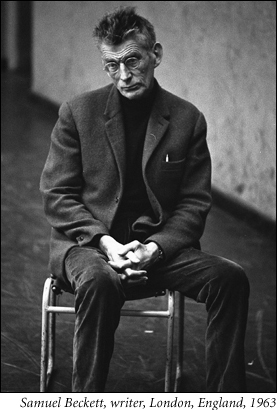The first thing that comes to mind while discussing generative art, is John Conways "Game of Life." In fact, it's not really a game. There are no winners or losers. The concept of the player is lost as well. There is a designer, though.
The rules are very simple:
The universe of the Game of Life is an infinite two-dimensional orthogonal grid of square cells, each of which is in one of two possible states, live or dead. Every cell interacts with its eight neighbours, which are the cells that are horizontally, vertically, or diagonally adjacent. At each step in time, the following transitions occur:
1. Any live cell with fewer than two live neighbours dies, as if caused by under-population.
2. Any live cell with two or three live neighbours lives on to the next generation.
3. Any live cell with more than three live neighbours dies, as if by overcrowding.
4. Any dead cell with exactly three live neighbours becomes a live cell, as if by reproduction.

The initial pattern constitutes the seed of the system. The first generation is created by applying the above rules simultaneously to every cell in the seed—births and deaths occur simultaneously, and the discrete moment at which this happens is sometimes called a tick (in other words, each generation is a pure function of the preceding one). The rules continue to be applied repeatedly to create further generations.
The game is located at the following address: http://www.bitstorm.org/gameoflife/
Of the examples studied during the course, the bitmap example (Corcuff, 2008) with randomized pixel generation is located at the following address: http://www.random.org/bitmaps/
The exact same (a figure of speech) 10x10 pixel squares can be created to illustrate the beforementioned example. Squares up to 300x300 pixel with 4x zoom can be achieved with this tool.
Random.org hosts quite a few randomization centric solutions. Out of these the name Samuel Beckett caught the eye (randomly generated short prose). This relates directly to generative literature. The website states that:
"In 1969, the Irish-born writer Samuel Beckett (1906-1989) published the piece of short prose Sans in French. One year later, in 1970, it was followed by a translation (by Beckett himself) into English titled Lessness."

"An interesting characteristic of this work is its combination of dense aural and structural patterning and apparent randomess. Both versions consist of 24 paragraphs containing a total of 120 sentences. Each sentence occurs twice: once in the first half of the work and once in the last. Beckett later indicated to critics that the order in which the sentences in Lessness appear had been determined randomly by drawing little slips of paper out of a container." (Random.org, 2011).
The Random.org site allows you to create your own version of "Lessness". Although access to the site is free, it's still restricted due to copyright considerations. A password can be obtained by sending an e-mail.
Generative art has been discussed in great legths, but so far, generative literature has not been defined in this blog. Thus:
Generative literature, defined as the production of continuously changing literary texts by means of a specific dictionary, some set of rules and the use of algorithms, is a very specific form of digital literature which is completely changing most of the concepts of classical literature. (Balpe, 2005).
An overview of generative art and literature examples can be found on the following addresses:
http://www.random.org/
http://blog.hvidtfeldts.net/index.php/generative-art-links/
http://generatorblog.blogspot.com/
References
Wikipedia. (2011). Conway's Game of Life. Available: http://en.wikipedia.org/wiki/Conway's_Game_of_Life. Last accessed 27.01.2011.
Random.org. (2011). Possible Lessnesses. Available: http://www.random.org/lessness/. Last accessed 27.01.2011.
Random.org. (2011). Random bitmap generator (BETA). Available: http://www.random.org/bitmaps/. Last accessed 27.01.2011.
Balpe, J-P. (2005). Principles and Processes of Generative Literature. Available: http://www.brown.edu/Research/dichtung-digital/2005/1/Balpe/index.htm. Last accessed 27.01.2011.
No comments:
Post a Comment